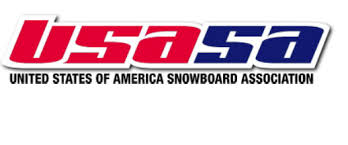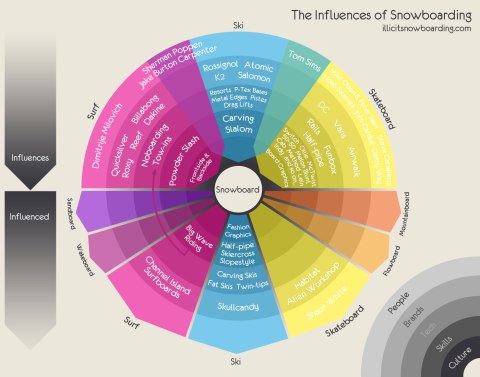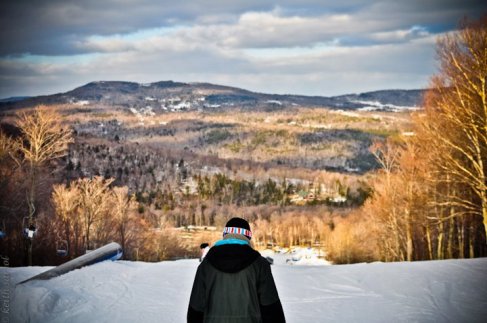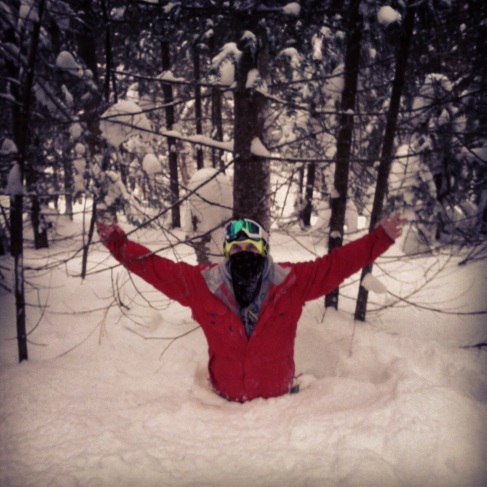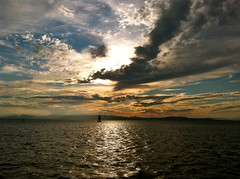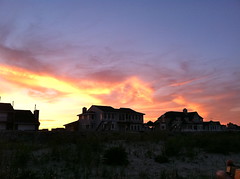Blog Archives
Life of an Intern
During my Junior year Spring semester, I interned with Origin Design and Communications. Origin is a Canadian marketing, design, and communications agency that solely works with mountain sport and outdoors related clientele. The East Coast branch is located in Montreal, Quebec, and is where I reported to every Tuesday and Thursday during the semester. During my internship I carried out research on clients including the key retailer accounts: The North Face brand stores, Salomon retail locations, and independent retailers, studied competitive clients and prepared competitive analysis documents. I also reviewed and uploaded content for websites via a content management system, analyzed Facebook pages of client companies to find ways of expanding followers, likes, and traffic. I authored two blogs and even earned outstanding mid-semester and end-of-term evaluations. Fast forward now to this semester and I have been actively pursuing a new position to fill the requirement for my final semester Advanced Internship course.
Over Thanks Giving break I received an email that I had been waiting on for alittle over a month, although it felt more like a year. The email was from a woman by the name of Jennifer Langille. Jennifer is the Marketing and Communications manager for the United States of America Snowboard and Freeski Association. I’ve wanted to intern with the USASA ever since I spoke with her at the Champlain College Internship Fair. That day I decided I would do everything in my power to gain an internship position with the association. When I finally received the email offering me a position, I sent my acceptance reply a minute after to set my spot in stone. I was, and still am ecstatic to be offered this opportunity. Experience with a national snowboard association will be very valuable towards my resume. Just about everyone in the snowboard industry is aware of the USASA and the large impact it has on the community. An internship like this will resonate well with just about any employer I approach in the future.
In terms of what my duties will in tale, all i know as of now is that the interns will be tackling a “special and exciting project” after the New Year. Jennifer had also mentioned at the internship fair that the USASA chooses a few of their top interns on the East Coast to fly out to Copper Mountain in Colorado for their biggest event of the season, Nationals. I am going to work my butt off to make sure I am considered for this special experience.
Uncovering the Strength of the Snowboard Community
Argument:
The snowboarding community is one of the strongest, most tight-knit communities to date. This strength is attributed to the individuality and uniqueness of riders involved; and their ability to overcome “social oppression” on the hill with hard work, dedication, and respect.
“Knuckle Draggers”… The term “knuckle dragger” has been one of the most popular derogatory terms directed at snowboarders. What makes this situation so interesting is the fact the snowboarders as a community are in fact hard-working and disciplined. The snowboard community has been there for the anticipation, celebration, and even devastation. When money needed to be raised, the community pulled it off. Every member of this community carries pride and respect when it comes down to the team as a whole. Whether they carry themselves with this pride and respect outside of the community is up for discussion, but as one, we the members of the snowboard community are not something to mess with. How can individuals that have been stereotyped and attacked with such terms as “degenerates”, and “scumbags”, come together to establish one of the most tight-knit, growing, and functioning communities to date; that the majority of our school is apart of?
In the early 1980’s snowboards began appearing with increasing regularity on U.S. slopes. At first, resorts weren’t sure how to deal with the new sport. Some required riders to pass a test proving they were capable of sharing the slopes safely with skiers. Others instituted outright bans on snowboarders. Many others also resorted to segregation by limiting snowboards to specific areas of the hill. As snowboarding became more mainstream, the tests, bans, and segregation policies fell by the wayside, with a few exceptions.
At this time when snowboarders first began to hit the slopes, resort ski schools had few if any snowboard instructors, so riders were largely self-taught. Considering there really weren’t any other options at the time, other than being self-taught, lead to a new level of first time rookies attempting to carve-up the mountainside. These riders, lacking the proper instruction, became safety hazards to themselves, the ski resorts, and all fellow snow-sliders. In our present-day society, snowboarders have plenty of learning options and instruction to choose from. “Smart Style” is a snowboard specific program put into place at every ski resort in the US directed at educating riders of the proper freestyle etiquette. Although “Smart Style” stemmed from the snowboarding community, these guidelines now apply to anyone and everyone taking part in freestyle skiing and riding.
“NSAA has once again teamed with Burton Snowboards, as well as the Professional Ski Instructors of America (PSIA) and the American Association of Snowboard Instructors (AASI) in the safety education effort. The video is aimed at educating guests on how to use freestyle terrain properly, and integrates the new Get Smart consumer information including the four points of Smart Style: Make a Plan, Look Before You Leap, Easy Style It and Respect Gets Respect. The video also illustrates the ATML method: Approach, Take-Off, Maneuver, and Landing. The video highlights an instrumental message in freestyle terrain use: avoid the backseat and land on your feet.” (NSAA)
Critics of the “snowboarder way” must understand that not ALL riders deserve to be tagged with the negative stereotypes that are so often connected to the sport. The inappropriate actions of an individual on the hill should not be placed on the shoulders of the snowboard community as a whole, or resort operators for that matter. In order to help combat these negative aspects, all partners in the industry must do their part. Manufacturers need to re-evaluate their advertising and marketing images, retailers need to promote positive attitudes, the media needs to quit highlighting illegal activity on and off the hill, and most importantly snowboarders need to start viewing themselves as members of a larger community of mountain visitors. The lack of respect seems to be the source of many skeptics sour perspective towards snowboarders. Maturity and respect are two tools every snow slider should never leave the house without. This doesn’t go without saying however those individuals of the greater snowboarding community each carry their own sense of style and character that may or may not reflect the snowboarder stereotype. An avid rider who truly enjoys the sport has the right to embrace their unique style without conflict, as long as they posses the proper knowledge and respect to do so accordingly; following the rules and regulations set forth.
Most riders during the birth and rise of snowboarding were young individuals who wore baggy clothes; looking like nothing the ski industry had every witnessed before. The rebellious attitudes these riders carried with them went over very poorly with the rest of the resort community. However, resorts had a valid argument at the time; labeling the ban on snowboards as a policy based on safety. With the advent of organized snowboard instruction, the creation of the American Association of Snowboard Instructors, and the inclusion in 1998 of snowboarding as an Olympic Sport, these arguments no longer apply. The three resorts that continue to ban snowboarding make it difficult, if not impossible, to closely integrate the two communities even further at this day and age. Of course resort owners can implement any rules and restrictions they see fit, but continuing to segregate the snowboard community only keeps these negative issues alive and apparent.
Some ski areas have encountered problems with abusive snowboarder behavior. Others, however, have had great success integrating snowboarders through on-hill structures and comprehensive management. The problems of property destruction and abrasive attitudes stem from within the “new school” faction of the freestyle community; both skiers and snowboarders. New school riding is characterized by groups of riders doing skateboard-style tricks that use stationary objects, like snowmaking equipment and picnic tables, as ride-able terrain. This “new school” community, because of such unique and questionable style and tactics, have become the center of controversy for resorts and fellow snow fanatics alike.
We cannot forget that these “freestylers” are just another community stemming from the mutual love for innovation within their passion, skiing and snowboarding. They are a body of individuals, all working together, executing the same goals, all for one common goal, to have as much fun as possible. If something is close knit, it is defined as closely integrated, and bound in love or friendship. This sums up exactly what the freestyle community, and especially the snowboard community, is all about.
Snowboarding gives a rider the chance to experience such intense feelings of enjoyment and pleasure as they glide over their frozen environment. If one individual riding alone can experience such positive abundant emotions every time they strap in to their board, then imagine what a community of fellow enthusiasts all sharing the same wonderful mentality can do. To put it simply, the main reason the snowboard community is so strong and tight-knit is because of the challenges they had to endure in order to raise the sport to where it is today. This rebellious image many snowboarders hold is merely aftermath of becoming such a unique individual, in such a welcoming family.
“We are groms, OGs, and everything in between. We are pass holders and ticket clippers,. We are park hot lappers and back country journeymen. We are first tracks and last hits. We are gangsters, gypsies, hipsters, and utilitarian’s. We don’t care, at least we aren’t skiers. We fall down and we progress. We design and we destroy. We create and we test. We are opinionated and open minded. We are talkers and we aren’t perfect. We are an idea, a movement. We are dreamers and we are nightmares. We are abstract thinkers and engineers. We are shows at night and precision manufacturing all day. We are artists and we are businessmen. We are snowboarders.”
Putting FUN back in Snowboarding
When you examine the National Ski Areas Association stats, interest in snowboarding is going downhill. 15 years ago snowboarders were described as “a more hard-core, badass, dedicated bunch than skiers”, a segment that hit the slopes an average of 7.6 days a year. These days the number is only 6.1 days. The percentage of visits to resorts by snowboarders has declined over the last two winters, to 30.2 percent in the winter of 2012 / 2013. Interest in lessons is fizzling too, as well as the number of new participants. What happened to “the fastest growing sport” of the 90s?
Most people are pointing fingers at the economic downturn, sub-mediocre snow quality (especially on the East Coast), and rising costs of the already outrageously priced essentials. Seriously, how is anyone expected to spend $1,000 on a board set-up, $500 on outerwear, $200 on additional accessories like goggles, tuning supplies and a lock? You’re looking at close to $2,000 and you’ve barely left the store! Then you still have to worry about travel costs to the mountain, and lets not forget the icing on the cake; that wonderfully hefty fee waiting for you at the ticket window. And I’m a college student! Even though these are valid, I feel there is a greater reason for the decline in interest. I think the industry has lost sight of it’s most important asset: snowboarding is all about having fun.
Most kids have a favorite television show, and mine was Rocket Power. Rocket Power was a cartoon about four friends doing extreme sports and getting into crazy situations. My favorite episode of all time was when the gang took a trip to their local mountain to rip up the halfpipe and freestyle park. Can you guess what they were “ripping” on? Every member of the group was on a snowboard. Even though it was just a cartoon, I knew they were all having the time of their lives, what freedom and innovation!
I needed to have that much fun. I rented a board for a few hours and gave it my all on some puny hill. I guess Dad figured it was a fleeting impulse, so he didn’t arrange any instruction. The first time on a snowboard is almost always the same for every rider. It’s incredibly discouraging and like most seven year olds, my patience ran out. Defeated, I returned to two planks for the rest of the season.
But I just couldn’t shake the feeling I was missing out on something amazing. Just before my third winter of skiing, I changed my mind and set my sights on learning to ride. This time around nothing was going to stop me. An instructor got me past the early discouragement and kept me focused on my goal. When I finally made my first toeside turn across the trail: I fell in love with snowboarding. It was the same emotion I’d imagined when I watched the cartoon characters ride. From this moment on, snowboarding was my absolute passion.
Everything I do in life revolves around the snowboard industry. Almost every single job I’ve held has been within the industry. Whether it was working at a ski/board shop for five years or for Burton Snowboards, I have seen many of the sport’s peaks and valleys. Currently the industry is in a valley; it has forgotten what fueled the fire in the first place, it’s only running on fumes of the fun fuel that got us here. If the snowboard industry worried less about their wallets and more about the fun factor, we would see a much-needed increase in participants. More fun = more interest.
Some companies have began to introduce fun back to the snowboard community. Burton has designed an incredibly fun way to introduce children aged three to six to the sport of snowboarding with Riglet Parks. These themed parks allow kids to snowboard at a really young age, rather than starting on skis – this appeals to snowboarder parents who want to ride as a family. The Riglet Parks engage kids in a fun way with animation and using gear that makes snowboarding easier for kids. The parks even have themes such as the Toy Story themed park at Jay Peak or the Star Wars themed park at Sierra-at-Tahoe.
Neff Headwear is another company doing things right. This season Neff created “Neffland” – a terrain park devoted to having fun. This project has the slogan “The funnest place on Earth”. Neffland doesn’t conform, it isn’t another monster terrain park only a fraction of resort guests can use. Instead, Neff designed a park for all skill levels; this allows rookies to progress and veterans to showcase their talent. The unique features scream fun – I mean come on, who doesn’t want to jump over a giant ice cream cone or slide an elongated candy-cane? What better way to do this than encompass the spirit of snowboarding?
Having fun is the core of snowboarding, it’s the way to make the sport more appealing and it’s certainly the reason I ride.
